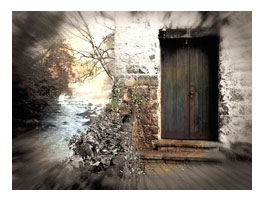
has been perfecting his signature style
Phil Turk has been creating a unique blend of emotion and technique, working for years on his creative process to make it a consistent and integral extension of his life.
A graduate of Florida State University, Turk studied photography in the university's Bachelor of Fine Arts program. Since FSU focused more on artistic expression rather than commercial technique, Turk was able to explore a myriad of photographic concepts and ideas, creating a variety of techniques that provide him with his own eclectic photographic style.
The darkroom became his experimental laboratory where he began manipulating and altering basic photographic images to synthesize imageries that expressed his personal visions. The visions he was developing represented a curious perspective of the photographed image, residing in interpretation somewhere between fantasy and reality.
In 1972 he set out to visit a friend in Monterey, California, and during his vacation he was so struck by the spectacular conditions—the geography, and ever-present fog naturally created for photography—that he did not return to Florida for ten years. Instead, he remained in Monterey, creating photography that he would sell to art galleries and craft dealers throughout California. In his travels throughout California he bumped into the late Ansel Adams at a gas station south of Big Sur and came away from their brief discussion deeply inspired by Adams' advice to "follow your own vision."
In 1982, Turk returned to Florida and completed the evolution of his style and technique to a level where now, the photographic process is a subconscious effort for him. He is able to isolate photographic images and transform them into final prints without mechanical thought, allowing him to maximize the time he spends with the creative process. He chooses to express emotion more than technical perfection, and says he feels the pursuit of an elusive technical perfection, in and of itself, can be a trap that inhibits one's creative development.
"I invite my audience to have questions about my art," he says, "and if I've done my job well, those questions always challenge."
